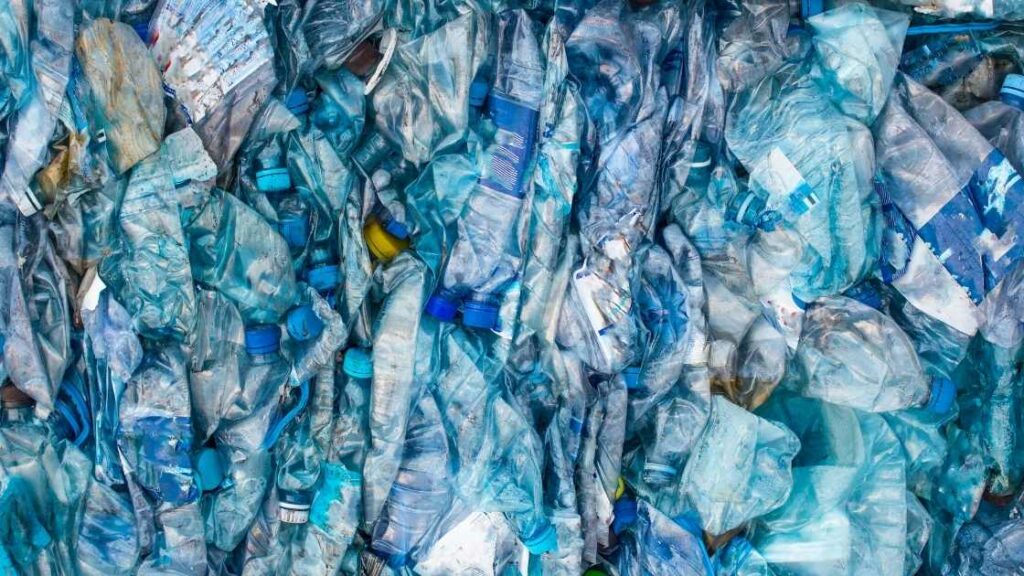We recently ran into a deep dive article about the need to invest in our recycling infrastructure. It summarizes how detached our society has become from basic understanding of how recycling works, how most countries (including the US) have off-shored that responsibility to faraway lands – out of sight, out of mind – and how we’re missing out on a great opportunity to invest in this precious resource.

A few points really stand out to us from the perspective of a tech textile company:
I. Infrastructure is at the heart of everything
If you’re a recycling enthusiast, the first point is a hard pill to swallow. It essentially points out that although we’ve been living through a phenomenal era of innovation – think about the advances we’ve made in computing and communication technologies – our recycling methods have barely progressed since the 1970’s. Just ask yourself when was the last time you heard of a big breakthrough in recycling plastics?
More important than the lack of any cool recycling technologies has been the lack of development of core recycling infrastructure that could make recycling an economically viable path forward. When we look at the world’s leading economies, only Germany cracks the recycling rate of over 50%, while the US comes in with a rate of just over 20%. When it comes to PET bottles, the raw materials that can be used within the textile industry, Taiwan’s rate is exemplary at around 95% with Japan and Korea also around 90%.
We believe that in order to make recycling economically viable, we first need to put in the work of developing systems to collect, sort, and aggregate similar recyclable materials. Only then will the core materials that up until now have been considered too expensive to consider for recycling, be available in quantities and at costs reasonable enough to consider processing for reuse.
As a textile company, we’ve marveled at the advances made in the types of threads and yarns and their extraordinary functionality over the last century. It’s truly a shame that fast fashion has cheapened the value of clothing by developing the expectation that apparel should be cheap and short lived. From our perspective, planned obsolescence is absurd for apparel, we should always focus on quality over quantity. We also believe that as a society, we should put more emphasis on finding ways to collect and sort discarded materials so entrepreneurs could figure out their true recycling potential.
Plastic is NOT the problem, it’s what we do with it
The second point that caught our eye speaks to the value of plastics and how we’ve forgotten just what a valuable resource it is. We’ve forgotten the energy, the brain power, the resources needed to make something as simple as a plastic spoon. We also take for granted just how awesome its properties are – it’s lightweight, flexible, practically indestructible, and if used the right way recyclable.
That’s why using it to create that plastic spoon or one-time use rain poncho, is analogous to using gold as gravel in our driveway. We should aim to completely eliminate this one-time use approach, with caveats for special use cases such as in medical settings and personal hygiene where sterility and integrity of our tools is of the most importance.
The bottom line is that plastics have a purpose on this planet, and if used properly can benefit our society. In the world of textiles especially, we see plastics playing a key role in clothing the soon to be 8 billion people on our planet.
We abuse it when we use it
The final point that caught our attention in the article is closest to our heart at NTX. It is about how we go about treating this very precious resource. Specifically when it comes to textiles, and textile processing like dyeing and coloration, there are great abuses being done which make it almost impossible to REcycle the original raw materials that make up our fabrics.
Destruction during the coloration process of textiles is executed by the introduction of the hight temperature and high pressure alongside the tension and stress applied to fabrics that in effect shorten the polymer chains. The length of the polymer chains and its relationship to lifecycle of the polymers can be looked at similarly to the way telomerase in DNA are thought to indicate our living beings internal clock that tics down to the end of our life. In essence the structural integrity of the polymer chains is slowly degraded and makes them ineligible for true recycling or at the least shortens the number of cycles that they can be used for. In other words, from the first traditional coloration process the used up or discarded fabrics are set onto a path of downcycling that too soon ends with completely unusable trash.
This is where NTX® Cooltrans®, our revolutionary low carbon dyeing technology, offers a much more benign & environmentally friendlier textile coloration alternative. Not only is our system dramatically more efficient with regards to water use and energy use. It is also a much gentler process that allows the underlying raw materials to retain their structural integrity, this is primarily done via the processes’ lower heat input during coloration. This allows the final materials much more likely to be able to be truly recycled and, if treated properly, used for many more cycles in the future.

